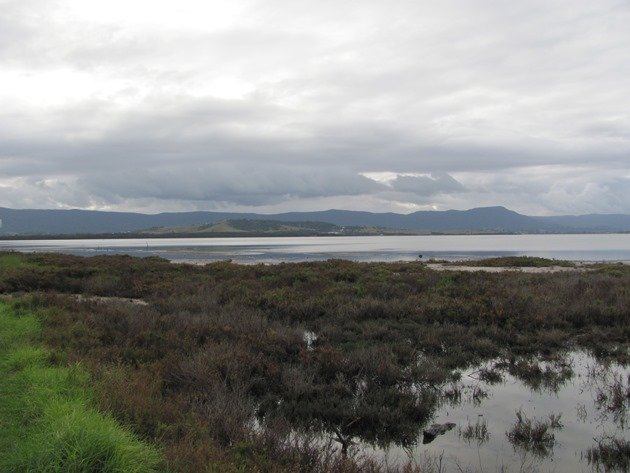
As you can see from the above photo there was a day that we needed to get out of the Southern Highlands in New South Wales on our recent holiday and head for the coast. We had a really good day on the coast visiting Bass Point Reserve and we then dropped by Lake Illawarra on our way back to the Southern Highlands. Depending on which direction you looked the weather did not appear so bad! Lake Illawarra is located in between the Pacific Ocean and the escarpment and it is approximately 9.5 kilometres (5.9 miles) long and 5.5 kilometres (3.4 miles) wide. The maximum depth is 3.7 metres and the water can enter from the ocean allowing for a great variety of birds. There has been a project running to eventually complete pathways all the way around the 37 kilometre (23 mile) perimeter and we found a very useful booklet at the Shellharbour Visitor Information Centre. It breaks the walkway into sections giving you information on the highlights and also if it is suitable for cyclists and pedestrians. The back pages of the booklet highlight the plants and birds of the area, though of course it cannot cover all of the species that you are likely to encounter.
Whyjuck Bay
Around Whyjuck Bay on the south side of the lake we encountered shallow mudflats and a huge variety of birds feeding in the late afternoon light. We had Royal Spoonbills, a pair of Pied Oystercatchers, a pair of Black-winged Stilt, Masked Lapwings and a Little Egret and Intermediate Egret close to shore.
Warning!
Pied Oystercatchers and a Silver Gull
Black-winged Stilt
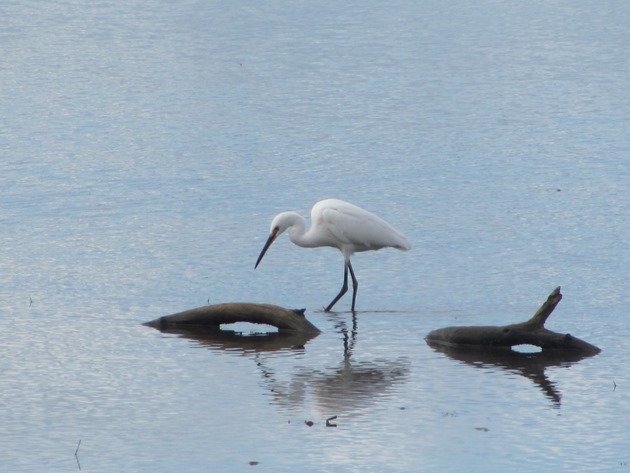
Little Egret
It was rather amusing to see what appeared to be statues on top of each light pole late in the afternoon in the carpark, but they were not statues at all. Australian Pelicans had taken a light pole each as a roost!
One Australian Pelican per light pole!
Due to time restraints that day we headed back up through Macquarie Pass into the thick fog and back to Mittagong. We then planned to leave in good time on the day that we were returning to Sydney to enable ourselves to explore more of the many walkways around the lake. We returned to Lake Illawarra on the west side initially and went to the Yallah Bay reserve where there is a jetty and you can walk to the end of the spit. This was an excellent area for observing Little Pied Cormorants, Little Black Cormorants and Australasian Darters as they roosted along the jetty. There was a White-faced Heron roosting in a tree along the walkway and Welcome Swallows swooped over the water.
White-faced Heron
We then followed the road around anti-clockwise until we came to the lake entrance and despite it being June we observed some over-wintering Bar-tailed Godwits and Eastern Curlew. Red-capped Plovers ran around on the sand islands due to the low tide and there were also Black Swans present. The native plants that were flowering produced New Hollands Honeyeaters and Silvereyes nipped around calling shrilly. Crested Pigeons walked around the car-park and Spotted Doves watched the fishermen stood along the edge of the lake.
We then continued around Lake Illawarra to the northern side and to the Berkeley foreshore. Another section of the walk trail takes you to a bird hide that is raised ten metres allowing excellent views across the whole lake. The trail then takes you along Hooka Creek and more birding opportunities. There were Royal Spoonbills and a White-necked Heron in the creek and looking across to the islands you could see a gathering of Little Black Cormorants.
Views from the bird hide of Lake Illawarra
The highlight of the walkway in this northerly section of Lake Illawarra was when a Fan-tailed Cuckoo flew in front of us and landed in a tree with a large grub. Without that grub it may not have stayed long enough for me to photograph it, so although it was not good news for the grub it was good news for us. It was one more Australian Cuckoo for the year!
Fan-tailed Cuckoo with a grub
Once we headed north from Lake Illawarra we kept to the Grand Pacific Highway and close to the coast. Not far from Lake Illawarra we were able to add Kelp Gull to the year list!
Kelp Gull and Silver Gull
There are plenty of opportunities for a huge variety of birds around the shoreline of Lake Illawarra and with the pathways that have been completed so far there is access to 80% of the perimeter. Whether you are interested in a short or long walk there is plenty of variety and ample parking.


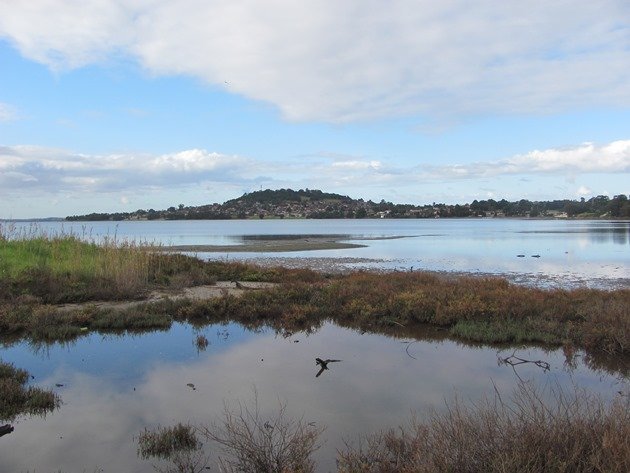
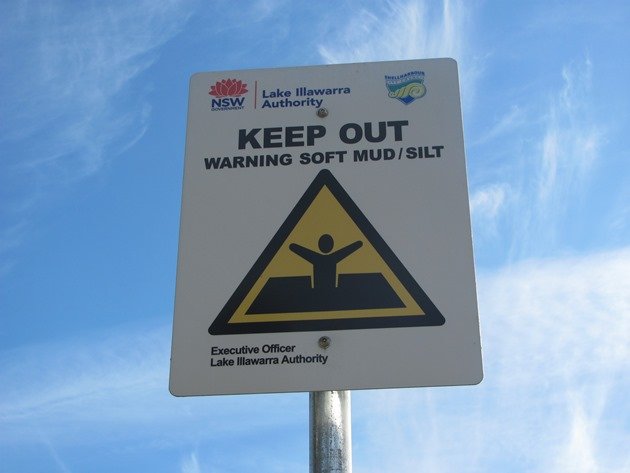
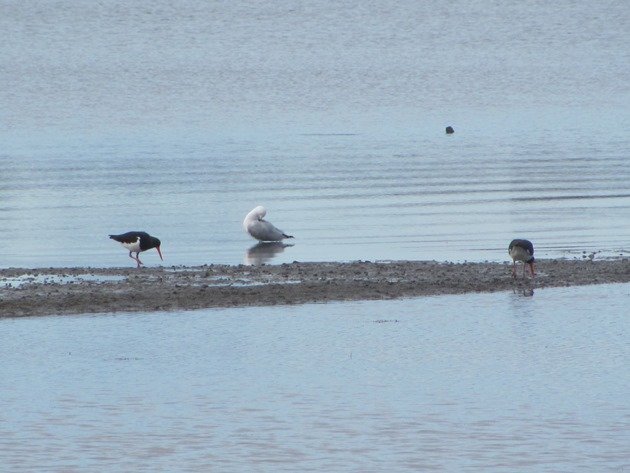
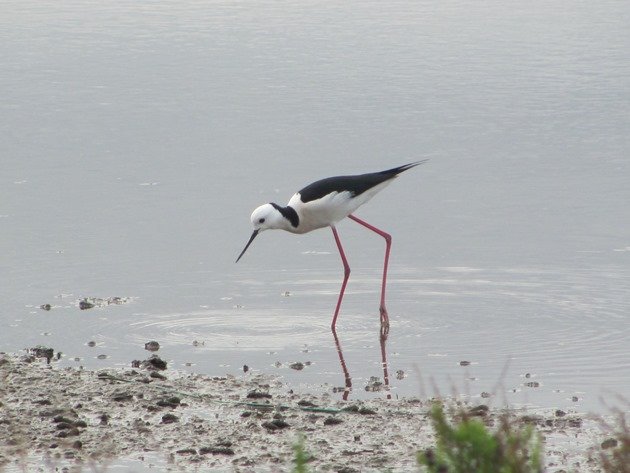
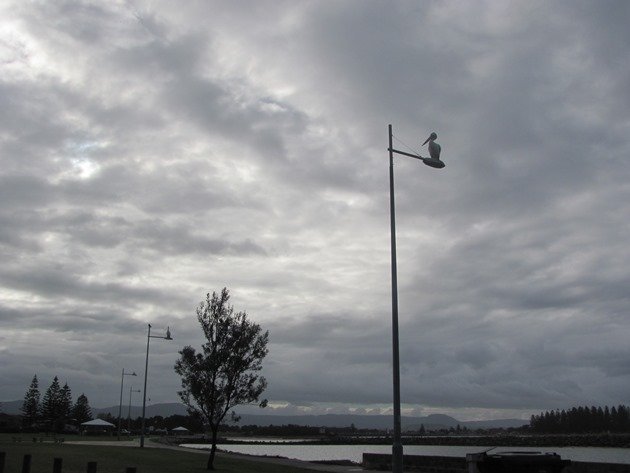
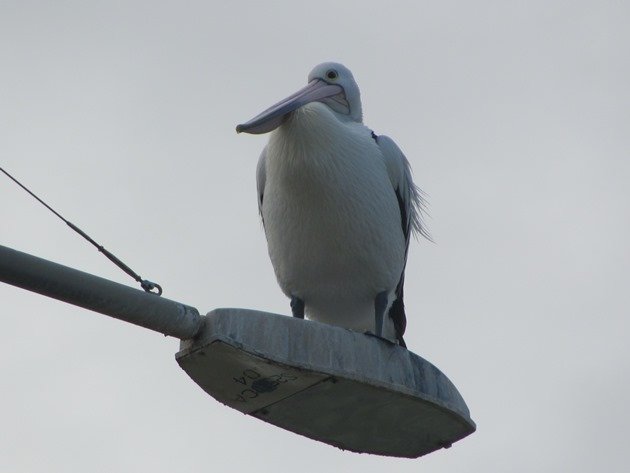
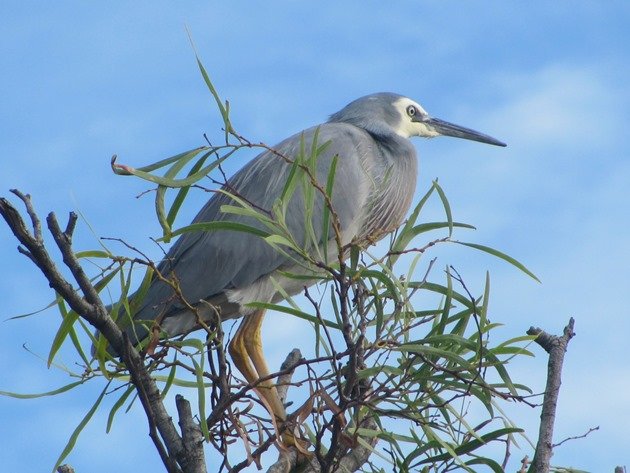
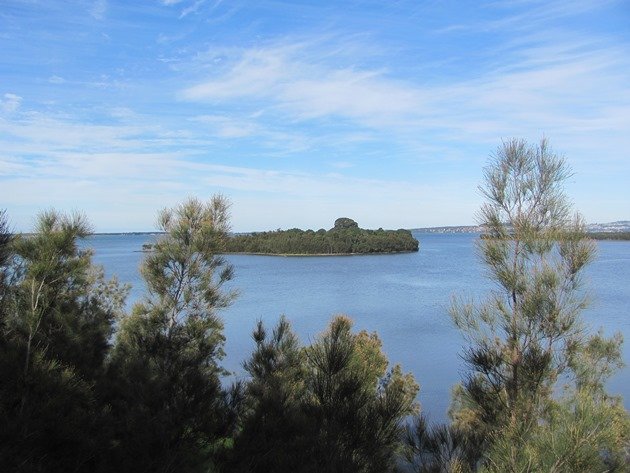

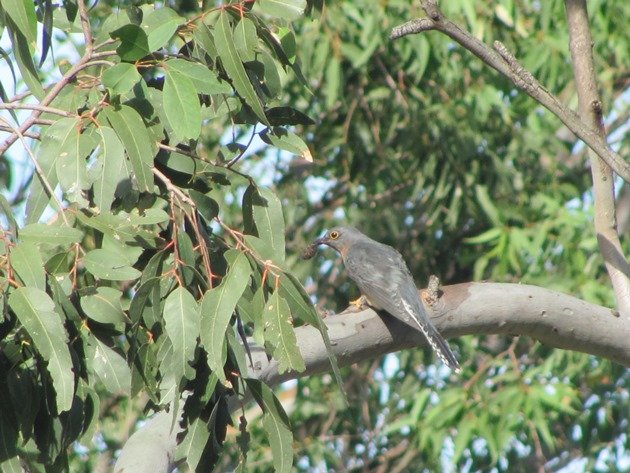
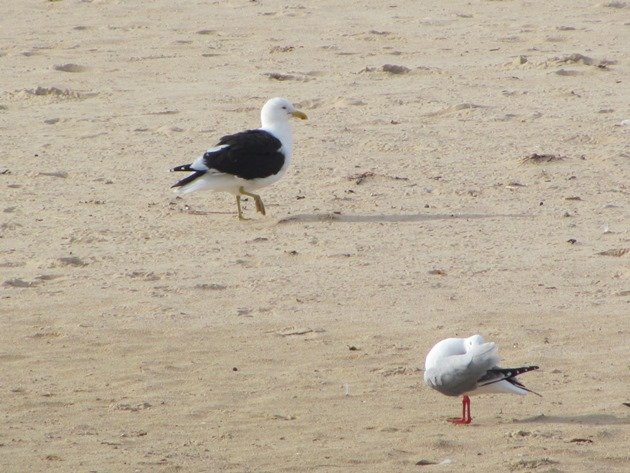











You know Clare, I don’t want to sound ungrateful, but your posts from the beaches of Broome are much more impressive landscape-wise. This is simply too European, just look at the grey sky! 🙂 🙂
And that’s a peculiar bill for an Intermediate Egret, so long and slightly decurved. Or am I wrong? Maybe the ones in Africa look differently than the ones in Australasia…
Yes, grey sky…oh dear! Winter in southern Australia…just like summer in Europe! 🙂
Now the correct label is on my photo it may make sense! Both species present and put the wrong label on the photo….Ooops! 🙁
Well, at least you returned to your good ol’ tradition of showing just how incredibly dangerous life in Australia is – death and dying all around, even your mud is more dangerous than anywhere else! 🙂